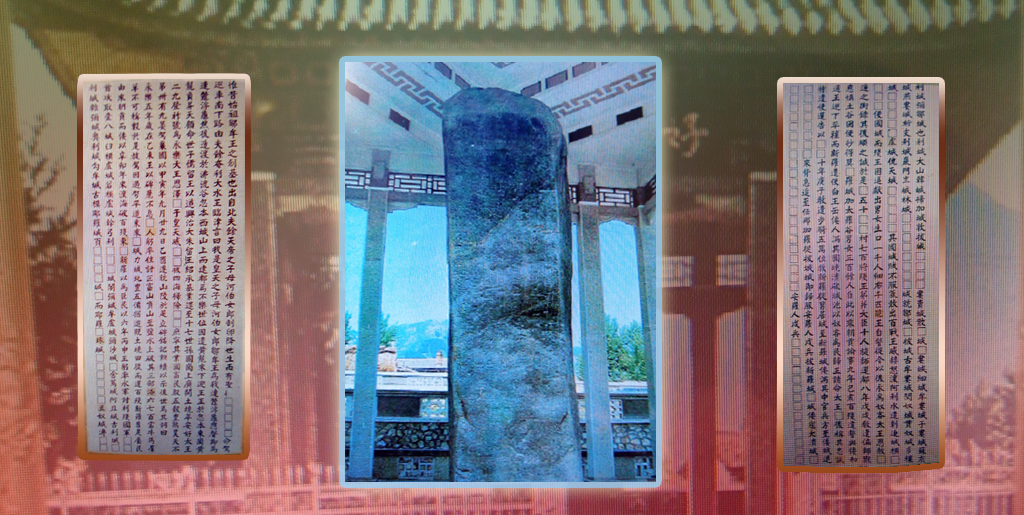Jo Nov 4, 2022
Okryugum was invented in the 1970s as an original national flick instrument by developing wagonghu, one of the old national instruments that had been passed down from ancient times. Chairman
Okryugum consists of the body made up of a resonance box and tune adjusting pedals, and the legs. The seven tune adjusting pedals attached to the legs make variations possible in any conditions. It has a total of 33 strings. It has two bridges on the resonance box; one on the front side and the other on the eight pillars at the back.
Okryugum is a C instrument which ranges from C2 to G4. There are seven pedals that are arranged in order of C, D, E, B, A, G and F from the left.
Okryugum produces clear, elegant and beautiful tones true to the meaning of its name. Its tone is so diverse that a single pluck sounds like a harp, a piano, a kayagum or a guitar. Such tones blend well to produce a silvery one. Since it fully supports a chromatic scale and vibratos like a kayagum, it is regarded as a unique and excellent national instrument with a great power of expression. It is used as a solo instrument and plays an important part in a national instrument ensemble as well as in guaranteeing the national colouring and sentiment of the mixed orchestra of a Juche type with extraordinary tones and ample volume.
Ri Yong Ho, section head at the Academy of Social Sciences
...
Jo Nov 1, 2022
A mask dance that has been enjoyed by the Korean people is the oldest of all Korean folk dances. The mask dance evolved from a hunting dance that primitive people used to do wearing animal masks.
An animal mask dance was dominant in the primitive and ancient times, while a human mask dance that gave a vivid description of human life was also popular in the period of the Three Kingdoms. Some of the human mask dances were painted on some murals of the Koguryo tombs and some others were similar to “Kiak Dance” of Koguryo and Paekje. In the period of Palhae and Later Silla, there were several kinds of mask dances like Dragon Mask Dance of Palhae, “Choyong Dance” of Later Silla, Lion Mask Dance described in “Hyangak 5 Dances”, Woljon, Sokdok and Taemyon. During the Koryo dynasty, the mask dance became more diverse in kind and mask dance dramas that showed historical facts as they were also became fashionable. During the feudal Joson dynasty, the mask dance performed by village dancers, developed into a folk dance with provincial features. The mask dances in the latter half of the feudal Joson dynasty are classified with each local distinction into Pongsan Mask Dance and Haeju Mask Dance in Hwanghae Province, Lion Mask Dance in Phyongan Province and Hamgyong Province, Sandae masked drama in Kyonggi Province, Ogwangdae Dance and Field Dance in Kyongsang Province.
The folk mask dance loved by our people is valuable heritage of our national dance and an excellent cultural treasure that deserves to be boasted of to the world. As mask dances were performed mainly on outdoor stages, movements of arms and legs rather than acting or words raised artistic influence by giving a vivid and skillful portrayal of life.
To sum up, the Korean mask dance is one of the precious legacies of national culture with a long tradition and rich contents that represents the national aesthetic sense and emotions by dint of diverse and unique dancing techniques, and it is still widely danced with eternal viability.
Kim Son Yong, researcher at the Academy of Social Sciences
...
Jo Oct 27, 2022
The Korean people possessed of special love for their children had a custom of adorning the sleeves of their children’s coats with small pieces of coloured cloth.
Pieces of coloured cloth in rainbow-like harmony of colours ― mainly red, green, blue, yellow, pink, purple, white, etc. ― are usually attached to sleeves. Some of them are plain and some have patterns like flowers and butterflies and letters.
The breast of a rainbow-striped garment is decorated with striped or triangular pieces of cloth in various colours and the body is made in colours like green, jade green, yellow and pink for a good harmony of colours with the sleeves.
Rainbow-striped garments include saektongjogori, saektongkhunjogori, saektongmagoja, saektongturumagi, etc.
From ancient times, mothers in our country have dressed their sons and daughters in colourful coats and jackets distinguishable from casual ones on their first birthdays, which is a peculiar custom of the Korean people. Such customs are never found in other countries.
Since these clothes not only look beautiful and smart, but are to a children’s taste as well, they have been worn on first birthdays, birthdays and holidays and other visiting occasions.
The beautiful manners and customs peculiar to the Korean people have been improved by constant supplement of fresh elements over a long period and rainbow-striped garments have been developed into the ones representative of the national features.
Kim Kyong Il, researcher at the Academy of Social Sciences
...
Jo Oct 24, 2022
Korean traditional dishes have developed in the course of a long history and they are widely-known to the world for their original flavor, aroma, appearance and colour and for their diversity in kind.
Korean traditional dishes have several good qualities.
First of all, Korean traditional dishes taste exceptionally good.
The original taste of each dish is guaranteed by several sorts of seasonings including soy, bean paste, peppered bean paste, sesame oil, garlic, spring onion and ginger harmoniously mixed with main ingredients ― various kinds of cereals, vegetables, fish, edible herbs, fruit, etc. that are grown in our country. For example, vinegared soy is used for oily dishes while vinegared hot pepper paste or mustard paste is used for slices of raw fish. Minced raw beef is mixed with sesame oil.
Secondly, Korean traditional dishes are wonderful in harmony of colour and delicious-looking.
Fruit of Schizandra chinensis or red pepper is used to make dishes red, and pine pollen or yolk of an egg is added for yellow colour. Green is made by wormwood or green soybeans, and black is made by black sesame or boletus. Fruit like ginkgo nuts or pine nuts are used to decorate dishes. Korean traditional dishes such as sinsollo, yakbap (sweet rice dish mixed with sugar, dates, chestnuts, pine nuts, sesame oil, etc.) and Pyongyang raengmyon (cold noodle) bring water to mouths for their natural colour and beautiful and good-tasting appearance.
Thirdly, diverse and scientific ways of cooking and cultural and hygienic ways of table setting are another feature of Korean traditional dishes.
Fermenting and aging like making kimchi, fermented rice cake and fermented fish together with boiling, baking, frying and stewing are the major ways of cooking, which not only make dishes delicious but also improve people’s health and prevent or cure diseases. As for table setting, cold and pungent dishes are served on small plates while those that are not pungent are put in large bowls. Besides, every food container has their lids for preserving the warmth and aroma of the contents and preventing them from going bad.
The last feature is the diversity.
The Korean people have lived on rice from olden times and the rice alone is made into many kinds including boiled white rice, bean-mixed rice, rice cooked with red-beans, bibimbap (mixed with spices, vegetables, meat, etc.), boiled millet, etc. They have made many kinds of rice cake as special dishes ― glutinous rice cake, rice cake steamed on a layer of pine needles, rice cake with flower patterns imprinted, cake made of rice flour and wormwood paste, steamed rice cake, etc. to name a few. Kimchi, which is original and widely known to the world, is diverse in its kind: whole cabbage kimchi, pickled sliced radishes, watery kimchi made of sliced radish, radish pickles with wild garlic, pickled mustard leaves and stems, etc. The number of Korean dishes is beyond enumeration ― dishes cooked in different seasons, those for traditional holidays and those cooked in different parts and so on.
Korean national dishes with a long history and tradition are still being developed and enriched in conformity with the aesthetic senses of the times and the demands of the people.
Pak Sung Gil, researcher at the Academy of Social Sciences
...
Jo Oct 21, 2022
Janggu (a long Korean drum that tapers in the middle) is one of the representative national percussion instruments loved and enjoyed by the Korean people for a long period of time.
Janggu originated in Koguryo. According to historical records, it was called “yogo” as it was a drum carried at the waist. “Yogo”, which looks similar to present janggu, is painted on the murals in Tomb No.4 and Tomb No. 5 of Jian Five Tombs, Koguryo tombs, and it is recorded in a number of historical books that Koguryo had a yogo. This shows that yogo was a predecessor of janggu and the Korean people have used it since the period of Koguryo.
Yogo, made by Koguryo people, was handed down to the people in Palhae. The yogo from Koguryo and Palhae was improved to be similar to the present janggu during the Koryo and the feudal Joson dynasties, and it was called janggo.
Janggu is a percussion instrument of an extraordinary shape, which has two resonance boxes that are linked together.
Its balanced and beautiful look aroused people’s attachment to janggu. The left-hand side with a big resonance box is called kungphyon, while the right-hand side with a small box is chaephyon. You play it by hitting the sides with a janggu stick in the right hand. The kungphyon is made of thick skin and the chaephyon is made of thin skin.
In the respect of a tone and a sound, the kungphyon produces low soft sounds while the chaephyon makes high sharp sounds. Therefore, the janggu plays the role of two drums and expresses satisfactorily a variety of Korean rhythms and exquisite tunes.
As the janggu had a very wide range of applications for a long period of time and made progress in various playing techniques, it played the role of a conductor in a small orchestra and it was even used as a solo instrument.
With rhythms of various characters that excite a national zest, the janggu makes a great contribution to improving the performances of national music and it is also used as stage props in a music and dance.
With a time-honoured tradition, the janggu has been developed in every way. It is a proud national percussion instrument that is still loved by the Korean people and makes a positive contribution to the development of national music and the cultural and emotional life.
Ri Yong Ho, section head at the Academy of Social Sciences
...
Jo Oct 18, 2022
It is Korean nation that invented and used metal types, one of the epoch-making events in the history of development of printing technology, in the first half of 12th century for the very first time in the world.
People in Koryo, first unified state of the Korean nation, invented and used metal types by further developing wood-block printing and wood-type printing technologies with a long history, thus making a great contribution to the development of publishing and printing technology of the world.
In 1958, metal types moulded in brass in the first half of 12th century were found at Manwoltae in Kaesong, which was the capital of Koryo. These types made of copper, tin and lead as main constituents and silicon, iron and aluminium as subsidiary constituents are 12mm long, 10mm wide and 8mm thick.
According to “Tonggukrisanggukjip” by Ri Kyu Bo, a famous writer in Koryo, 28 copies of fifty-volume “Sangjongryemun” (“Sangjonggogumrye”) were printed on Kanghwa Island between 1234 and 1241. This is still accepted as the longest record in the world associated with the use of metal types.
Other historical books including “History of Koryo” say that several Buddhist books were printed in metal types, which proves that by the beginning of 13th centry printing in metal types was widely conducted on a fairly high level and that the time of its invention in Koryo was the first half of 12th century at the latest.
The fact that Gutenberg from Germany made metal types in 1450 implies that Koryo was as long as 200 years before Europe in the use of metal types.
“Paekunhwasangchorokbuljojikjisimcheyojol”(“Jikjisimgyong” for short) published in Koryo in 1377 is accepted as the world’s oldest copy printed in metal types of all remaining ones and registered at UNESCO. This book was on display in a book exhibition held in Paris, France, under the sponsorship of UNESCO in 1972, where it was appraised as the oldest of all existing printed materials in metal types, and this was informed to every country in the world.
The world’s first metal types are a great pride of the talented and civilized Korean nation with a time-honoured history and brilliant culture.
Kim Kwang Jo, researcher at the Academy of Social Sciences
...







